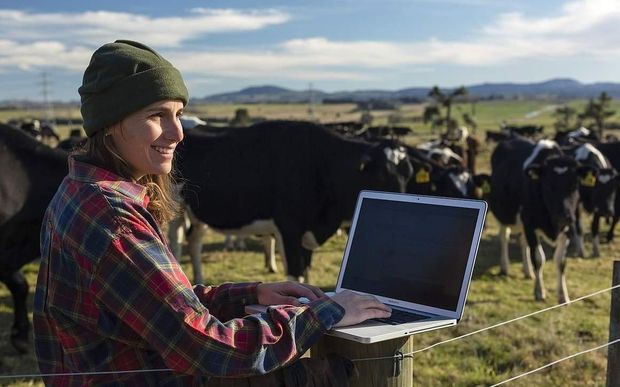Precision agriculture enabled through Industrial IoT sensor, analytics networks
Just like nearly any business, in agriculture farmers are concerned with maximizing profit by finding efficiencies wherever possible that save time and money while boosting productivity.
This need for gathering and analyzing data in a way that produces business insight is what the Industrial IoT is all about. A variation of the same approaches taken with oil and gas, manufacturing or retail can also work in agriculture.
A report by Beecham Research highlighted that the agriculture industry needs to adopt IoT tools in order to meet the expected food demand by the increasing population globally. “In order to counter these challenges, the United Nations Food and Agricultural Organization (FAO) recommends that all farming sectors should be equipped with innovative tools and techniques, particularly digital technologies. Precision agriculture aims to optimize yield per unit of farming land by using the most modern means in a continuously sustainable way, to achieve best in terms of quality, quantity and financial return,” the report states.
The study also revealed that in the near term, smart farming will allow farmers to improve productivity and reduce waste, ranging from the quantity of fertilizer used to the number of journeys made by farm vehicles. However, in the longer term, smart farming will allow farmers to better understand the wider conditions that lead to variabilities in the agriculture sector.
According to Beecham Research, the adoption of smart farming tools will intensify from 2017 to 2020. “The interest in IoT is already strong from agricultural machinery vendors such as John Deere, Claas and CNH Global, while there is also considerable attention on data and farm management systems from a variety of players including agri-food giants such as Monsanto,” the study said.
Let’s take a look at how startup OnFarm Systems is addressing the agricultural vertical with help from PTC, which providers numerous industrial software solutions including the ThingWorx IoT platform.
In a PTC publication, Lance Donny CEO and founder of OnFarm, discusses the challenges and opportunities of bringing Industrial IoT technology to bear on farming:“Just about every agricultural business faces the same conundrum: big-picture insight has long relied entirely on farmers developing a strong personal sense of how myriad different environmental elements—for example, weather conditions or soil moisture content, among many others, interact with each other on a daily and even hourly basis, and what the outcomes of those interactions are likely to be on a daily basis.”
He continued, “Farmers still rely in great part on gut instincts, the Farmer’s Almanac, years of hands-on experience, and – more often than not – luck to deliver on agricultural management and key variable optimization. We needed to move farming into the 21st century – what I refer to as decision farming.”
“Technology, primarily in the form of field-based sensors, plays a growing role as a tool for agricultural professionals. Since at least 2010, the ability to effectively capture field data through sensors has grown at a rapid rate. Sensors continue to become more reliable, and now drive the ability to capture large data sets of information at increasing levels of granularity. Sensor technology has successfully evolved into a core tool of agricultural management–but there are real barriers to maximizing its value for agricultural use.”
Telecom firms such AT&T are also engaged in precision agriculture. AT&T’s IoT division has partnered with agriculture machinery manufacturer John Deere to install a wireless modem in agricultural machinery such as tractors and harvesters.
In Spain, Telefonica put together an automated irrigation system that “connects hydraulic valves, meters, level meters and tamper detectors using GPRS so that farmers can now use their computers or mobile phones to set up an irrigation schedule. M2M also monitors other data relating to the soil, such as ammonia, fertilizer and pesticide levels. The new system saves 47 hm3 of water per annum, farm profits have increased by 25% and electricity bills, the main cost to date, have fallen by 30%.”
In another project in Spain, this one in partnership with Telit, farmers can remotely control greenhouse temperatures.
Verizon worked with Digi International to deliver an M2M solution using LTE connectivity to Heartland Farm Service in Illinois. The solution remotely monitors and controls manure spreading in a 75-mile radius area.

